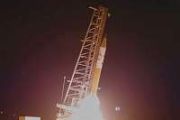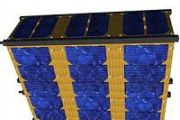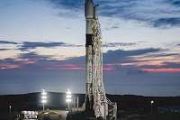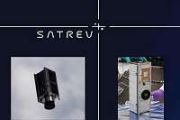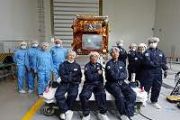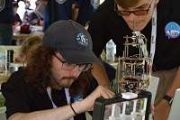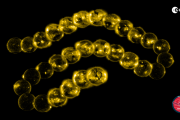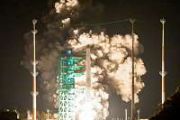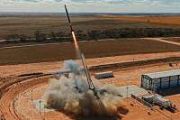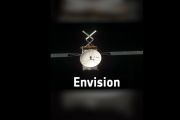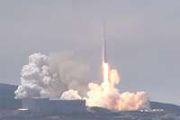
Copernical Team
MicroCarb satellite launches to map global carbon dioxide emissions from space
 The MicroCarb satellite, developed by the French space agency CNES in partnership with the UK Space Agency, has been successfully launched from Europe's Spaceport in Kourou, French Guiana. As Europe's first mission dedicated to monitoring and mapping atmospheric carbon dioxide (CO2), MicroCarb aims to deliver high-precision measurements to better understand the sources and sinks of this critical
The MicroCarb satellite, developed by the French space agency CNES in partnership with the UK Space Agency, has been successfully launched from Europe's Spaceport in Kourou, French Guiana. As Europe's first mission dedicated to monitoring and mapping atmospheric carbon dioxide (CO2), MicroCarb aims to deliver high-precision measurements to better understand the sources and sinks of this critical China unveils decades spanning Landsat dataset to advance environmental research
 China has released a comprehensive Landsat composite dataset covering nearly four decades of Earth observations. Spanning from 1985 to 2023, the new 30-meter resolution dataset introduces the first seamless, annual Leaf-On Landsat data cube for the country, significantly enhancing access to high-quality satellite imagery for environmental and land use studies.
Developed by Yaotong Cai and
China has released a comprehensive Landsat composite dataset covering nearly four decades of Earth observations. Spanning from 1985 to 2023, the new 30-meter resolution dataset introduces the first seamless, annual Leaf-On Landsat data cube for the country, significantly enhancing access to high-quality satellite imagery for environmental and land use studies.
Developed by Yaotong Cai and Google joins EU code for powerful AI models rebuffed by Meta
 Google on Wednesday said it would join the likes of ChatGPT-maker OpenAI and sign the EU's set of recommendations for the most powerful artificial intelligence models that has been rebuffed by Meta.
The European Union this month published long-delayed recommendations for a code of practice that would apply to the most advanced AI models such as Google's Gemini, in a code of practice.
The
Google on Wednesday said it would join the likes of ChatGPT-maker OpenAI and sign the EU's set of recommendations for the most powerful artificial intelligence models that has been rebuffed by Meta.
The European Union this month published long-delayed recommendations for a code of practice that would apply to the most advanced AI models such as Google's Gemini, in a code of practice.
The NASA readying for crewed Artemis II moon flight
 NASA is preparing for its April 2026 Artemis II 10-day mission that will send a crew of four around the moon to prepare for future crewed moon landings.
The Artemis II mission will demonstrate a variety of capabilities that are needed to complete deep-space missions, including those to the moon and Mars, the space agency said.
The Artemis II crew is comprised of mission commander
NASA is preparing for its April 2026 Artemis II 10-day mission that will send a crew of four around the moon to prepare for future crewed moon landings.
The Artemis II mission will demonstrate a variety of capabilities that are needed to complete deep-space missions, including those to the moon and Mars, the space agency said.
The Artemis II crew is comprised of mission commander Map Africa project to deliver continentwide geospatial data for 54 nations
 Esri has partnered with Microsoft and Space42 to launch the Map Africa Initiative, a five-year project aimed at building the most detailed and scalable geospatial basemap of Africa to date. The effort, formalized at the 2025 Esri User Conference, will span all 54 African nations and provide high-resolution mapping data intended to support over 1.4 billion people.
Many African nations lack
Esri has partnered with Microsoft and Space42 to launch the Map Africa Initiative, a five-year project aimed at building the most detailed and scalable geospatial basemap of Africa to date. The effort, formalized at the 2025 Esri User Conference, will span all 54 African nations and provide high-resolution mapping data intended to support over 1.4 billion people.
Many African nations lack Cosmic dust particles reveal snapshot of Earth's ancient air
 Scientists have found a new way to probe the composition of Earth's ancient atmosphere by studying fossilized cosmic dust. An international team led by the University of Gottingen, with collaborators from the Open University, University of Pisa, and Leibniz University Hannover, developed a technique to analyze micrometeorites - tiny metal-rich particles from space that have been preserved in Ear
Scientists have found a new way to probe the composition of Earth's ancient atmosphere by studying fossilized cosmic dust. An international team led by the University of Gottingen, with collaborators from the Open University, University of Pisa, and Leibniz University Hannover, developed a technique to analyze micrometeorites - tiny metal-rich particles from space that have been preserved in Ear Spire to Provide ESA with Satellite Weather Data for European Research
 Spire Global has secured a new contract with the European Space Agency (ESA) to deliver satellite-derived weather data under ESA's Third Party Mission (TPM) programme. The agreement grants European scientists access to Spire's extensive historical Earth observation datasets.
The data, gathered from Spire's constellation of satellites, includes GNSS-Reflectometry and Polarimetric Radio Occu
Spire Global has secured a new contract with the European Space Agency (ESA) to deliver satellite-derived weather data under ESA's Third Party Mission (TPM) programme. The agreement grants European scientists access to Spire's extensive historical Earth observation datasets.
The data, gathered from Spire's constellation of satellites, includes GNSS-Reflectometry and Polarimetric Radio Occu SFL to Deliver Rapid Deployment AISSat-4 for Norway's Expanding Maritime Surveillance
 SFL Missions Inc. has secured a contract from the Norwegian Space Agency (NOSA) to develop AISSat-4, a ship-tracking nanosatellite scheduled for launch within a year. The mission aims to bolster Norway's maritime monitoring network by adding capacity as current satellites approach the end of their service lives.
Built on SFL's proven SPARTAN 6U platform, AISSat-4 will carry a single Automa
SFL Missions Inc. has secured a contract from the Norwegian Space Agency (NOSA) to develop AISSat-4, a ship-tracking nanosatellite scheduled for launch within a year. The mission aims to bolster Norway's maritime monitoring network by adding capacity as current satellites approach the end of their service lives.
Built on SFL's proven SPARTAN 6U platform, AISSat-4 will carry a single Automa BlackSky secures next stage of Navy contract for optical satellite link upgrades
 BlackSky Technology Inc. (NYSE: BKSY) has been awarded the next phase of a U.S. Navy research contract aimed at advancing optical inter-satellite link (OISL) technology for its next-generation Gen-3 satellite constellation. The goal is to enable faster and more secure in-space data transmission, particularly for high-resolution imagery and large volumes of intelligence data, before reaching grou
BlackSky Technology Inc. (NYSE: BKSY) has been awarded the next phase of a U.S. Navy research contract aimed at advancing optical inter-satellite link (OISL) technology for its next-generation Gen-3 satellite constellation. The goal is to enable faster and more secure in-space data transmission, particularly for high-resolution imagery and large volumes of intelligence data, before reaching grou Boeing X37B Spaceplane Prepares for Eighth Orbital Test Mission
 The Boeing-built X-37B Orbital Test Vehicle (OTV) is scheduled to embark on its eighth mission, OTV-8, no earlier than August 21 from Florida's Space Coast. This marks the next phase of operations for the uncrewed spaceplane, coming less than six months after OTV-7 successfully concluded.
According to Michelle Parker, vice president of Boeing Space Mission Systems, the program continues to
The Boeing-built X-37B Orbital Test Vehicle (OTV) is scheduled to embark on its eighth mission, OTV-8, no earlier than August 21 from Florida's Space Coast. This marks the next phase of operations for the uncrewed spaceplane, coming less than six months after OTV-7 successfully concluded.
According to Michelle Parker, vice president of Boeing Space Mission Systems, the program continues to 

